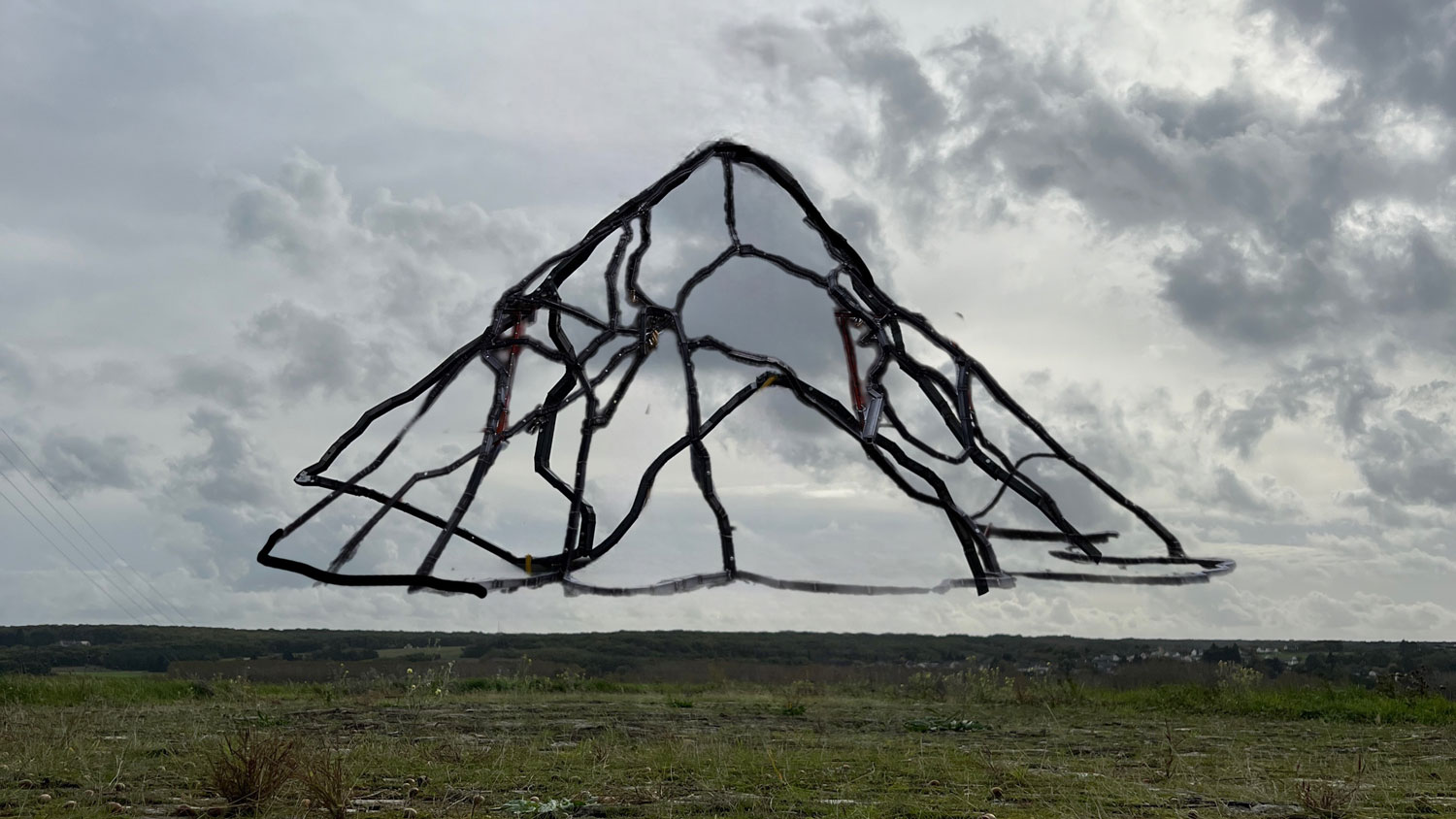
Nomadic Volcano Sculpture Lands at Storm King
LOS ANGELES — Earlier this month, artist Beatriz Cortez and her team were working overtime, putting the final touches on a massive steel sculpture of a volcano that took up most of her studio. Cortez had begun the piece during an artists’ residency at the Atelier Calder in Saché, France, where she says she had to construct a makeshift welding space to avoid setting fire to the historic building. It then traveled to her studio in Los Angeles, but its journey was only partially complete. Within a matter of days, it was picked up and shipped to New York for an exhibition that opened last Saturday at the Storm King Art Center, up through November 13. True to its peripatetic nature, the sculpture will depart from there early on October 28, leaving a void in its place, and be sent by boat up the Hudson River to the Curtis R. Priem Experimental Media and Performing Arts Center (EMPAC) in Troy for the group show, Shifting Center.
Themes of migration, diaspora, and global movement are central to “Ilopango, the Volcano that Left” (2023). Now the site of a placid crater lake located just a few miles east of the capital city of San Salvador, where Cortez grew up, Ilopango was responsible for one of the most calamitous volcanic events in human history, known as the Tierra Blanca Joven (TBJ) eruption. It was long thought to have caused the volcanic winter of 536 CE, which corresponded with disruptions and catastrophes around the globe such as the Justinian Plague in the Byzantine Empire, the fall of Teotihuacán, the devastation of local Mayan communities, migrations in Mongolia, and droughts and famines resulting from significant cooling of the planet as volcanic particles darkened the sun. Recent research has challenged this timeline, placing the eruption around 430 CE; however, the disastrous effect on the Maya and the global dispersal of the volcanic ash is not in doubt.
“I am not so invested in finding the truth and setting the exact date,” Cortez told Hyperallergic. “My effort is to speculate towards the past and towards the future, to try my best to imagine what could have happened, what could be possible, outside of the restraints of science or discipline.”
During a recent visit to her LA studio, Cortez said she views the sculpture as “a metaphor for the migration of land and people” — from the displacement of the Maya centuries ago to the forced exoduses today due to war, poverty, and environmental disasters — as well as a reference to the glacial tectonic shifts that create new lands and borders over an exponentially longer timeframe.
Cortez’s version of Ilopango is an organic patchwork of hand-hammered steel panels welded together around a skeletal armature that allows it to be assembled and disassembled for transit. As no contemporary accounts exist of how it looked, its form is based on conjecture and imagination. As with much of her work, it could be considered a form of Indigenous futurism, fusing Mesoamerican histories and traditions with a hard-edged, hand-crafted anti-colonial vision.
At Storm King, the sculpture is shown alongside “Stela Z, after Quiriguá (Contrary Warrior)” (2023), a steel monolith modeled after Mayan stelae that records the past, present, and future of Ilopango from its eruption to its journey down the Hudson, and “Cosmic Mirror (The Sky Over New York)” (2022, reconfigured 2023), a grouping of welded steel “stones” referencing an Olmec mosaic that mirrored celestial bodies on earth. At EMPAC, “Ilopango” will be joined by recordings from inside active volcanos taken by volcanologists, making perceptible inaudible sounds that emanate from deep within the earth.
Cortez views the fragments of Ilopango deposited from pole to pole as elements of the Mayan underworld, linking the spiritual and the geological. The migration of a mountain that she is undertaking makes visible this diaspora of dirt, echoing contemporary human migrations, but also illustrating the absurdity of man-made borders when confronted with the unfathomable movement of matter around the world.
“The particles went everywhere,” Cortez said. “No matter where people go, they’re part of the Mayan underworld.”

Main Image: Beatriz Cortez, llopango, the Volcano that Left (2023), steel, 12 x 19 1/2 x 10 feet. Photo: Phillip Byrne, courtesy the artist and Storm King Art Center.
